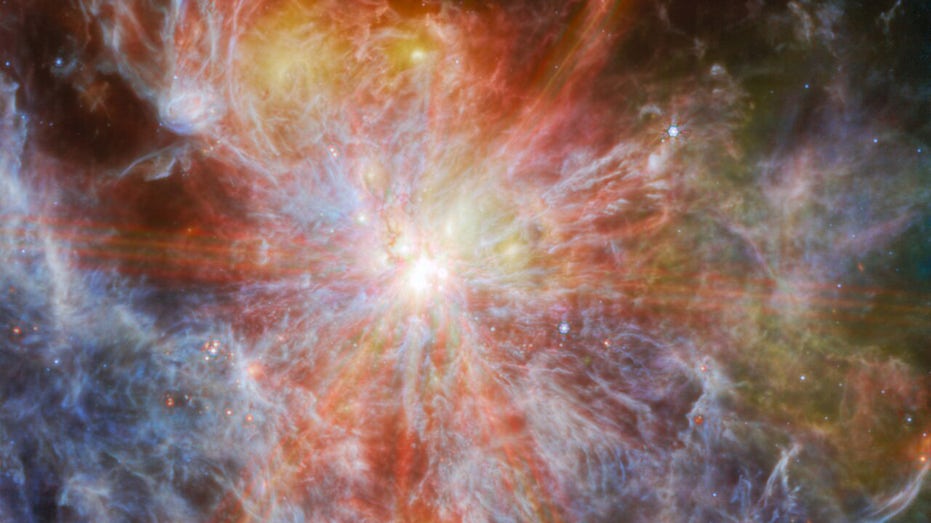The James Webb Space Telescope has captured a stunning new image depicting a star-forming complex known as N79.
The region is located in the Large Magellanic Cloud (LMC), which is a satellite galaxy of our own Milky Way.
Per the European Space Agency (ESA), N79 is a massive star-forming complex spanning approximately 1,630 light-years in the LMC, a generally unexplored region.
N79 is a younger version of 30 Doradus, another similar region also known as the Tarantula Nebula. Astronomers believe N79 can form stars far more efficiently than 30 Doradus, by a factor of two for the past 500,000 years.
The latest image depicts a brilliant starburst pattern surrounding one of three giant molecular cloud complexes with a series of diffraction spikes.
WITNESS THE MESMERIZING CONJUNCTION OF THE MOON AND VENUS IN SPACE
ESA says the prominent starburst spikes in the image are the result of the hexagonal symmetry of Webb’s 18 primary mirror segments. The spikes are most visible around bright, compact objects where all the light originates. Webb’s segmented mirror was launched folded, but unfurled after it arrived at its orbit point one million miles from Earth.
The latest image shows the region’s glowing gas and dust, visible thanks to mid-infrared light revealing what is happening deeper inside the clouds. Webb was designed to peer into such regions where stars such as our own are born.
Astronomers are interested in these regions because they provide insights into a younger universe when star formations were at their peak.
The Webb Telescope, the successor to the Hubble and the largest telescope ever launched into space, is a joint project of NASA and the European Space Agency. Webb’s giant mirror and exquisite resolution enable astronomers to compare and contrast observations of star formations in the N79 region at different evolutionary stages of the universe.




